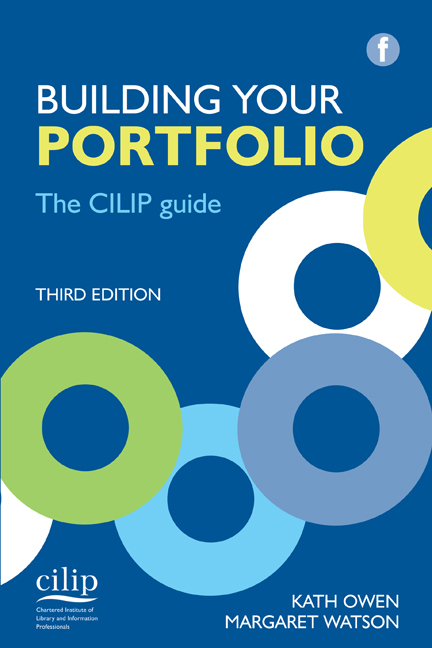Book contents
- Frontmatter
- Contents
- Contributors
- Foreword
- Acknowledgements
- 1 Introduction and getting started
- 2 Assessment criteria
- 3 Working with a mentor
- 4 Reflective writing
- 5 The curriculum vitae
- 6 The Professional Knowledge and Skills Base
- 7 Evaluative statements
- 8 Supporting evidence
- 9 The final steps
- Bibliography and references
- Websites
- Index
8 - Supporting evidence
Published online by Cambridge University Press: 08 June 2018
- Frontmatter
- Contents
- Contributors
- Foreword
- Acknowledgements
- 1 Introduction and getting started
- 2 Assessment criteria
- 3 Working with a mentor
- 4 Reflective writing
- 5 The curriculum vitae
- 6 The Professional Knowledge and Skills Base
- 7 Evaluative statements
- 8 Supporting evidence
- 9 The final steps
- Bibliography and references
- Websites
- Index
Summary
What is supporting evidence?
The supporting evidence is probably the largest part of your Portfolio. You will have collected a great deal of evidence of your professional developmental activities over the last year or two. The most important things to remember are that each piece of evidence should demonstrate that you meet the criteria for the relevant level, each document should support the points made in your evaluative statement, and you can evidence a variety of developmental activities over a period of time.
Selecting your evidence
You will probably not need to include all the evidence you have collected; choose your evidence well. If you have used a matrix to record your developmental activities against the assessment criteria, as suggested earlier, you should find the whole process of choosing and sorting your evidence easier. Later in this chapter Ruth Wilkinson gives an example of how the matrix can be used in Chartership. The matrix should also help you to identify any gaps in your evidence. The aim is to choose items for your Portfolio which are core to your application. There may be some of your documents which repeat the same point as others and can thus be omitted; for example, you don't need to include copies of all your PowerPoint presentations or all the information leaflets you have created. A sample of presentations, talks or flyers is sufficient. As Isabel Hood (2006) says, ‘Portfolios become slimmer with experience in constructing them and length of professional practice.’
One of the most frequently asked questions at CILIP professional registration events is how much supporting material should be included? The answer, predictably, is ‘As much as is necessary to show how you meet the assessment criteria’! For Certification you do not really need more than ten pieces of evidence. So be selective. There may be more supporting evidence for Chartership and Fellowship candidates but, again, quality is more important than quantity. My strong advice here is to seek individual guidance from your mentor or the candidate support officers in your area.
- Type
- Chapter
- Information
- Building Your PortfolioThe CILIP guide, pp. 79 - 92Publisher: FacetPrint publication year: 2015



